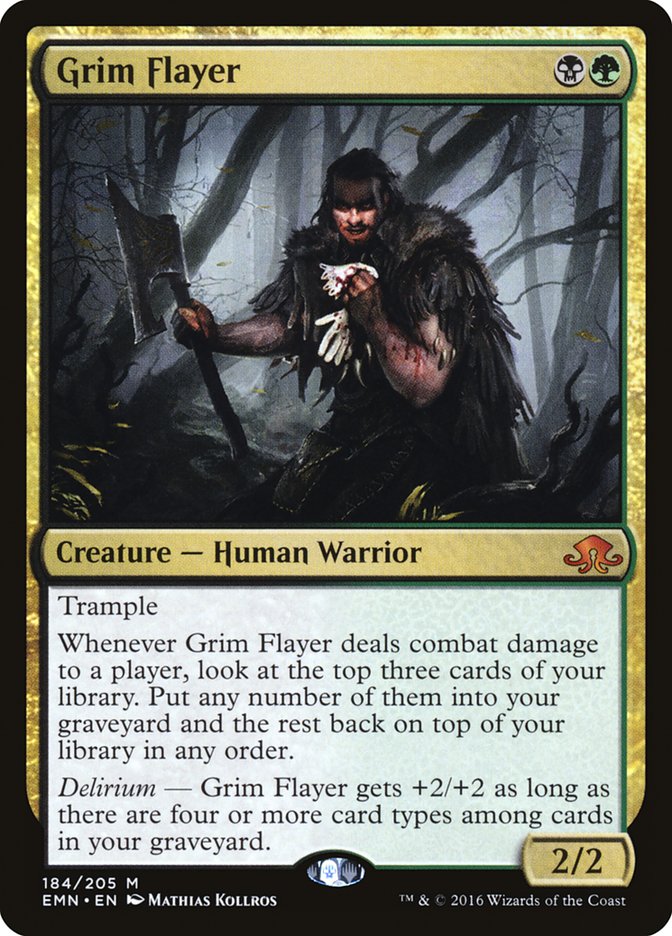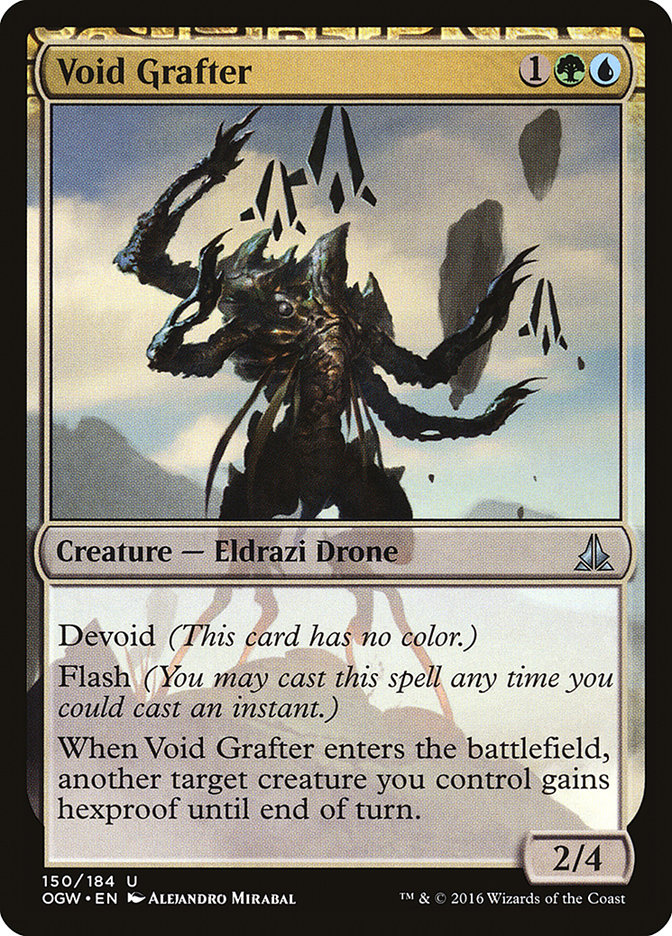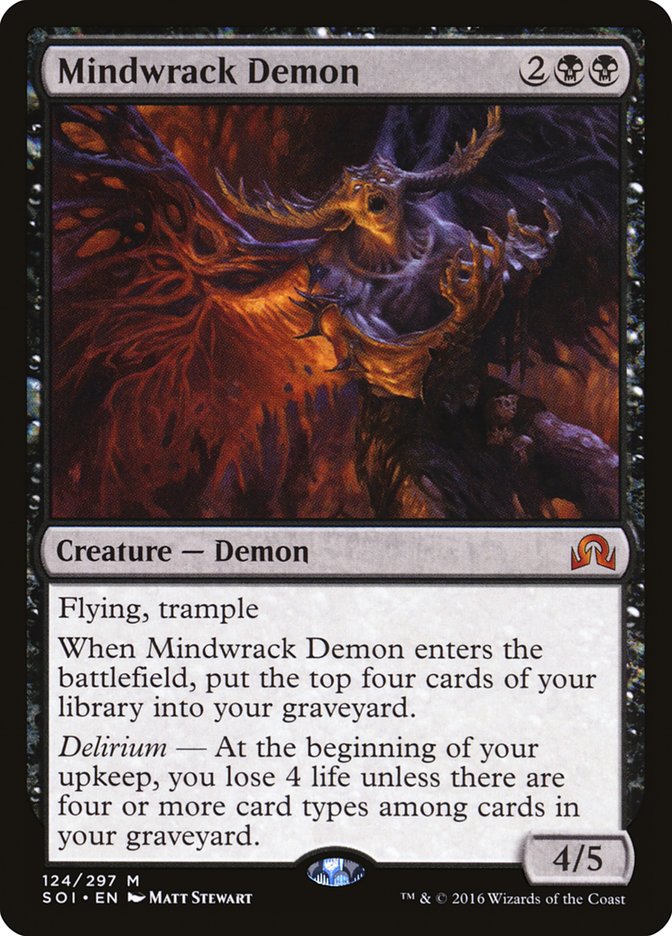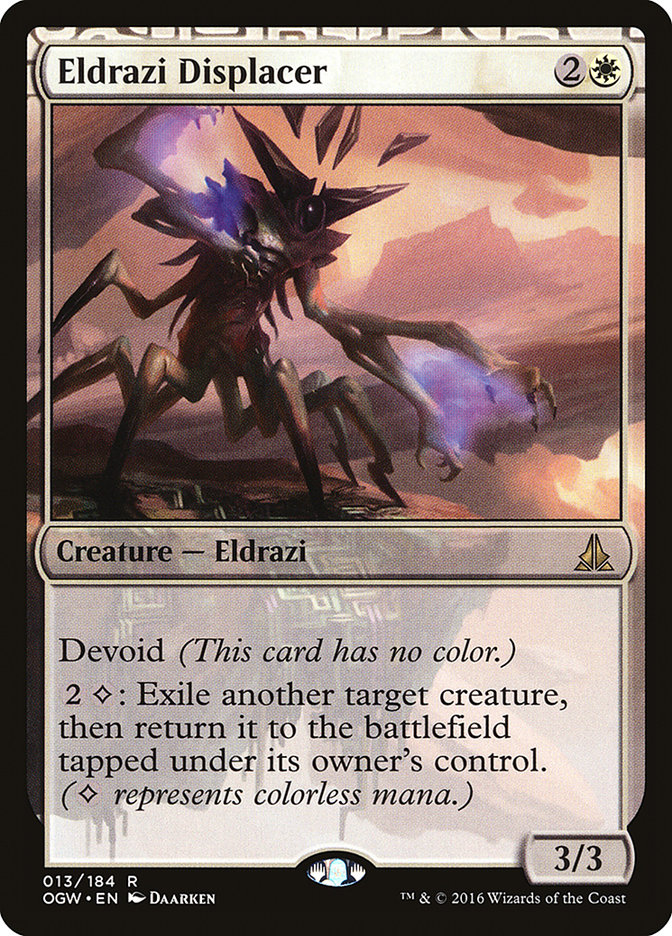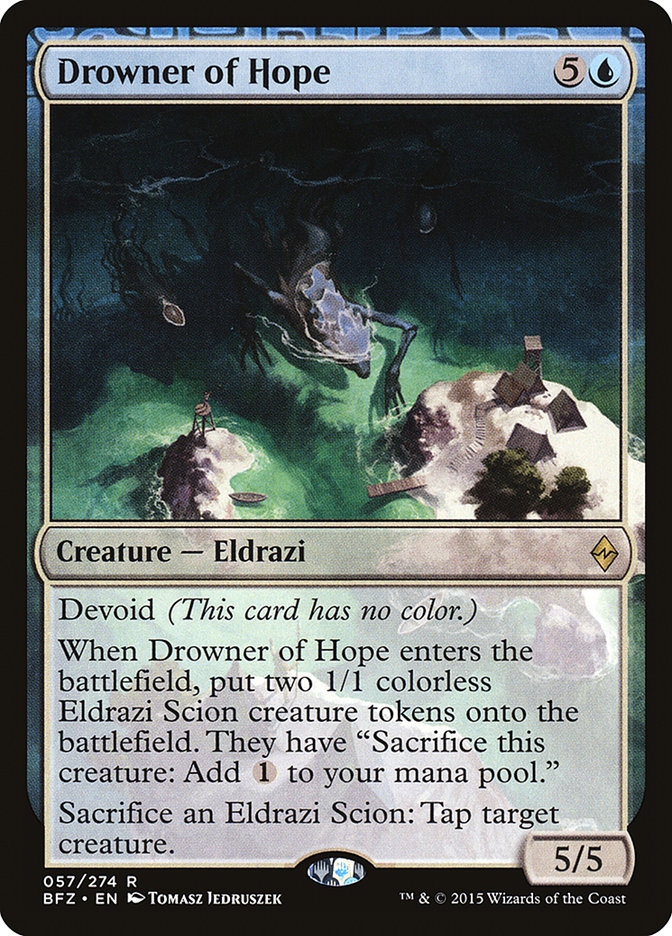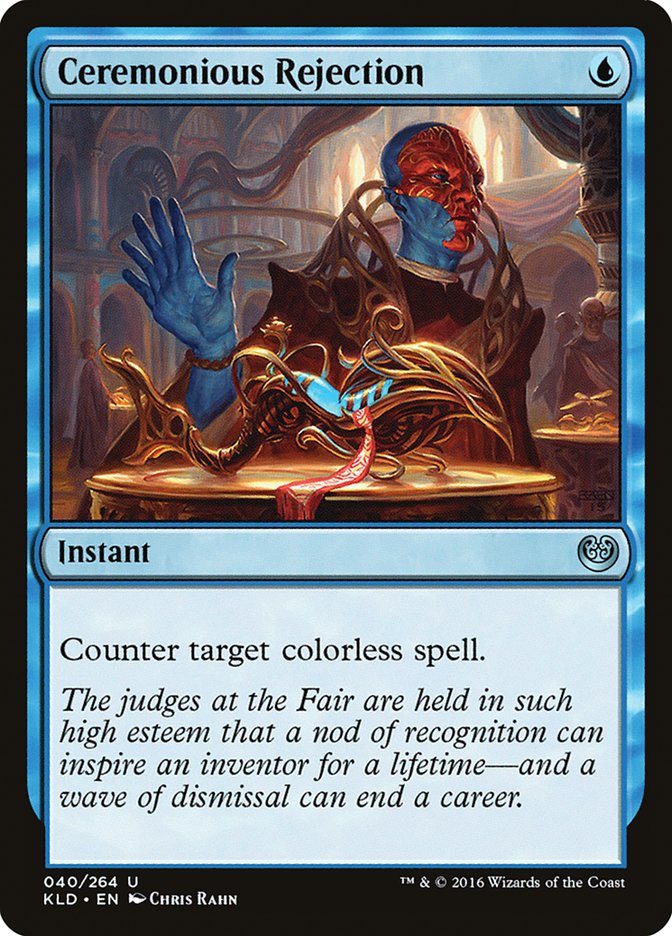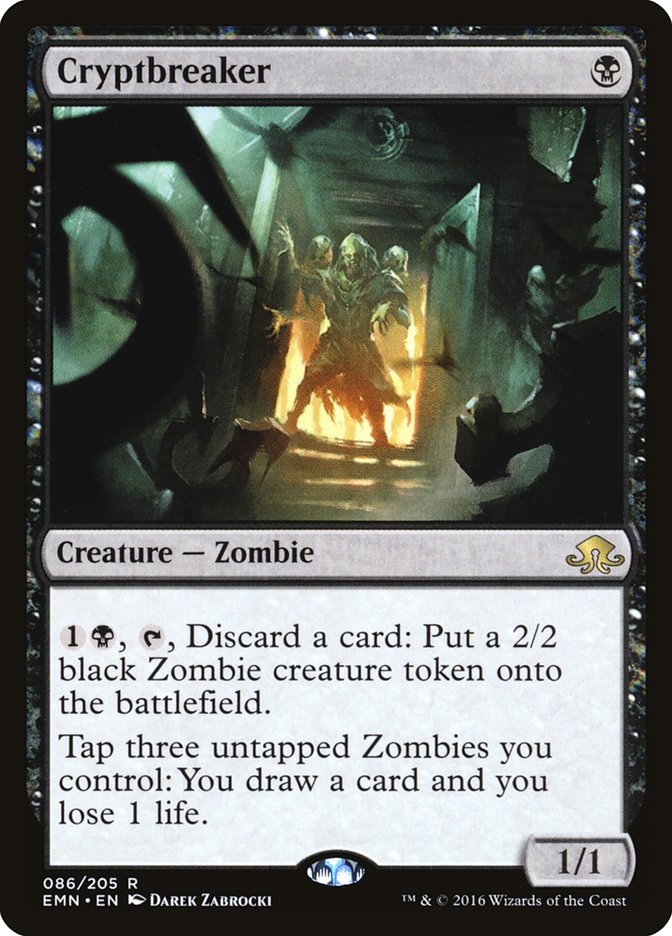It’s only been a couple of weeks since the Pro Tour and it seems like this once wide-open Standard format has been narrowed down to two decks. B/G Delirium and W/U Flash are simply dominating the metagame right now, and with good reason.
B/G Delirium is able to suppress the aggressive decks of the format with Ishkanah, Grafwidow, while Spell Queller and W/U Flash are keeping Aetherworks Marvel from even being registered for a tournament. Control decks are having a tough time with Emrakul, the Promised End and Gideon, Ally of Zendikar.
So where do we go from here?
Honestly, I’m not really sure. I wrote a little bit about B/G Delirium last week and told you how I regretted playing it at the Pro Tour because, frankly, we overshot the metagame. Our in-house metagame had developed a week too fast, it appears and we got punished for it by not accounting for the flashy decks revolving around energy. We quickly dismissed G/R Energy and Temur Aetherworks because of fragility and inconsistencies, and it appears, after the Pro Tour, mostly everyone else did too.
So what was I working on in the days and weeks leading up to Pro Tour Kaladesh before landing on B/G Delirium then?
I’d like to show you a few of the decks I personally worked on during the testing process for Pro Tour Kaladesh. Now, these aren’t all Tier 1 decks, but they were all competitive to the point we worked on them for a good amount of time before dismissing them. Sometimes during testing it can be hard to give up on an idea if it’s close to viable, but part of good testing is time management and knowing when to call it quits on an idea.
At one point during testing, someone on my testing team was considering playing all four of these decks at the Pro Tour, and I myself considered all of the first three. I like to revisit these decks occasionally because sometimes there is a certain hole in a metagame where some old ideas can become fruitful.
I’ll start with a deck I loved during testing, Temur Emerge:
Creatures (20)
- 4 Pilgrim's Eye
- 2 Void Grafter
- 2 Emrakul, the Promised End
- 2 Wretched Gryff
- 4 Elder Deep-Fiend
- 2 Ishkanah, Grafwidow
- 4 Primal Druid
Planeswalkers (1)
Lands (22)
Spells (17)

This is a deck I worked hard on and couldn’t get much past a stock list, but I feel the numbers in the maindeck are right where they need to be.
One cool innovation I came up with during testing was the addition of Void Grafter as a three-drop to emerge with Elder-Deep Fiend. Filigree Familiar was the obvious three-drop to add after the release of Kaladesh because of both the artifact type and the value it generated when it died sacrificing itself to an Elder Deep-Fiend. The problem is that the card you draw is mostly irrelevant, as it’s more important to hit your land drops and be able to get to the point you can cast Elder Deep-Fiend. This is why Pilgrim’s Eye was substantially better, especially during a time when Liliana, the Last Hope seemed to be in decline.
Void Grafter also lines up well against the aggressive decks. Often they would attack with their Veteran Motorist, Scrapheap Scrounger, or Toolcraft Exemplar, trying to bait out a Kozilek’s Return on turn 3 before further developing their battlefield. This would allow us to ambush a creature while also leaving a 2/4 virtual Wall on the battlefield to stop further attacks, all while also being fodder for a later Elder Deep-Fiend.
Void Grafter coming in at instant speed gave us protection from Reflector Mage while also even protecting Emrakul, the Promised End occasionally. Sometimes you’d cast Emrakul, the Promised End, triggering Sanctum of Ugin, and go fetch up a Void Grafter to protect Emrakul from a Stasis Snare or a topdecked Declaration in Stone. Since Emrakul, the Promised End and Sanctum of Ugin are cast triggers, you can have the Void Grafter in hand before Emrakul even resolves.
All in all, we thought Temur Emerge was a strong archetype that was just falling short of where it needed to be to be a true contender in the format. I myself was very surprised to not see more of this deck at the Pro Tour.
Kalitas, Traitor of Ghet was a major problem for this deck, and with people moving away from Kalitas and more towards Mindwrack Demon, maybe a Temur Emerge deck can once again be a contender.
The next deck I’d like to talk about is a W/U Panharmonicon deck that I and Steve Rubin spent a fair amount of time testing and developing.
Here is something close to where we ended up:
Creatures (23)
- 4 Drowner of Hope
- 4 Reflector Mage
- 4 Eldrazi Displacer
- 2 Thought-Knot Seer
- 4 Hedron Crawler
- 2 Selfless Spirit
- 3 Cloudblazer
Lands (25)
Spells (12)

Now I’m not entirely sure where the manabase ended up, as this was Steve Rubin’s pet deck for two or three days in testing and he did most of the work fiddling with the manabase, but this is where we were at one point during testing.
When we initially built the deck in testing, I had high hopes because it was just two good cards in Eldrazi, Displacer and Drowner of Hope combined with a third card, Panharmonicon, to create infinite tokens. Generally combo decks require you to play a bunch of bad cards to combo together, but both Eldrazi Displacer and Drowner of Hope are fine cards on their own. Panharmonicon was the only unexciting card, but it could usually make up for the turn you spent casting it when you followed it up with a Reflector Mage or Cloudblazer the following turn.
Now, with the combo, if you also have a Cloudblazer or Thought-Knot Seer, you can either make your opponent draw their deck (or draw your own deck until you find a Thought-Knot Seer, and then make them draw their deck) to close the game before letting the opponent untap.
There were two major reasons we gave up on this deck. The first reason was it was just a little too clunky. There weren’t many turns where you could cast double spells, and that left us falling too far behind against aggressive decks. The one time you could reliably double spell was when you drew Hedron Archive and Spatial Contortion; you could set up a reasonably efficient turn 4 casting both of those spells to allow you to double spell again the following turn or follow up with a Drowner of Hope to stabilize the battlefield.
The second reason we gave up on this deck? Ceremonious Rejection.
A one-mana counterspell that counters nearly every spell in this deck and was sure to see play in every blue deck.
This next deck is a deck I was very likely to have played in the Pro Tour until about Tuesday before the event when the rest of the team was sold on traditional B/G Delirium. This is remarkably similar to the deck Eric Froehlich played to an excellent record at the Pro Tour.
Here was my aggro-oriented B/G Delirium list:
Creatures (19)
- 4 Catacomb Sifter
- 2 Kalitas, Traitor of Ghet
- 1 Sylvan Advocate
- 3 Gnarlwood Dryad
- 1 Ishkanah, Grafwidow
- 4 Grim Flayer
- 3 Verdurous Gearhulk
- 1 Noxious Gearhulk
Planeswalkers (3)
Lands (24)
Spells (14)

I played this deck for about two days straight against our gauntlet and I was loving it. It seemed to keep up with or race the aggro decks, and could present a fast resilient clock against the midrange and control decks.
Early in the week, before the Pro Tour, B/R Zombies with Cryptbreaker and Voldaren Pariah was picking up steam on Magic Online. I decided to spend some time testing against both that deck and our B/G Delirium deck, and I was obviously outmatched by both decks.
Voldaren Pariah would simply destroy me whenever I would tap out for a Verdurous Gearhulk when playing aganst B/R Zombies. It was as if I could never cast the Gearhulk, because whenever I did, Voldaren Pariah would come out of nowhere. Insolent Neonate would get sacrificed to discard Haunted Dead, which would discard a Prized Amalgam and a Voldaren Pariah cast with madness to sacrifice the Zombies to blow up the battlefield I worked so hard to develop. You never knew when, but Voldaren Pariah was always there to punish me for putting all my eggs in two or three baskets.
Emrakul, the Promised End was easy to work towards for B/G Delirium with a few removal spells and an Ishkanah, Grafwidow to control the battlefield until eventually Emrakul would keep her promise and end the game for the smaller version of the deck.
Our version of B/G Delirium was splashing red for a pair of Radiant Flames at the time and I remember that making it difficult to overdevelop the battlefield at risk of losing everything the turn before I cast a Verdurous Gearhulk. I’m interested to play some more of this matchup to see if it’s as bad as I remember or if Radiant Flames was just a nightmare.
The last deck I worked on was kind of a mashup of two different decks: B/R Zombies and B/R Aggro. Here is the decklist for the B/R Zombie Aggro deck:
Creatures (23)
Lands (23)
Spells (14)

I actually thought Steve Rubin was playing this deck in the Pro Tour until watching him in a feature match in the later rounds of the event. He was contemplating this version and the more traditional B/R Aggro we all know up until the waning minutes of deck submission. The reason he wanted to play this deck was because of how explosive the Haunted Dead / Prized Amalgam package is.
I was never a fan of this build because I thought it was too cute and inconsistent when the point of playing a B/R Aggro deck with reach was to stay consistent and punish opponents stumbling. This deck is certainly more resilient, however, and I really liked the sideboard we had for all of our B/R Aggro decks. We could transform into a midrange deck with planeswalkers and Goblin Dark-Dwellers against midrange decks and into a control deck with Kalitas, Traitor of Ghet and Galvanic Bombardment as well as Goblin Dark-Dwellers against the aggro decks of the format.
With the format basically defined at this point, it’s always good to look back on old ideas and try to dredge up anything that may have solid matchups. If you had any old ideas or brews, I encourage you to go back and work through them and see if you can get them to a place where they can beat both W/U Flash and B/G Delirium. Any deck that gets to that point is certainly viable and something I’d strongly recommend moving forward in the next few weeks. If you’re just getting sick of playing with or against B/G Delirium and W/U Flash all the time, try out some of these ideas or some of your old ones.
Were I to go back and try one of these decks out again, I’d probably work a little more on Temur Emerge. How about you?


